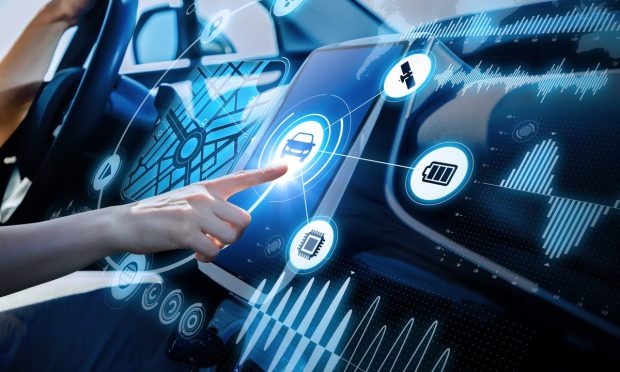Future of Connected Cars Puts Apps in the Driver’s Seat

As operating systems increase their roles in today’s driving experience, companies are inviting third-party developers to continue creating apps that add functions designed for use in vehicles.
For example, in a session for developers released June 7 during its Worldwide Developers Conference (WWDC), Apple said the next CarPlay that will be in iOS 16 will also include apps in two new categories: fueling and driving tasks.
“We’ve heard from many of you that there are even more driving-relevant apps you’d like to enable,” André Boulé, car experience software engineer at Apple, told developers during the session.
The presentation was followed by the event’s keynote presentation, during which Apple announced that the next release of CarPlay will be able to use all the screens on a vehicle’s dashboard, including the instrument cluster, offering the driver an interface that is familiar from Apple’s mobile devices.
Read more: Apple Adds Functionality to Its Vehicle Dashboard App
Adding Support for Fueling, Driving Task Apps
In the session for developers, Boulé said the new fueling category will include apps for vehicles powered by gasoline as well as alternative fuels. It’s meant to include apps that could, for example, start up a gas pump.
This addition of support for fueling apps will follow what’s already available for electric vehicle (EV) charging, which was launched with iOS 14. In the case of EVs, apps are for not only finding nearby EV chargers but also helping the user connect to a charging station and start it up.
“We’ve heard from many developers that this type of functionality would be great for more than just electric vehicles,” Boulé said.
The second newly announced category of apps — driving tasks — may include apps that help control car accessories, provide driving or road status and information, and help with tasks at the start and end of a drive.
“Keep in mind the primary purpose of these apps must be to enable tasks people need to do while driving — it’s for tasks that actually help with the drive, not just a task to be done while you drive,” Boulé told developers.
For example, these could include an app that would give a short list of important information about the roads near where the driver is located; an app that would manage a connected accessory such as a trailer controller, and an app that would enable drivers to keep track of their miles and categorize them as business or personal.
Optimizing Apps for Use While Driving
Throughout the session, Boulé highlighted design features that developers should include to make their apps appropriate for use while driving. These include presenting only information that the driver needs while on the road, keeping it short and displaying it in such a way that it can be read at a glance.
“When designing your driving task app, definitely consider making a single screen app that provides the minimum functionality your users need while driving and only enable tasks that can be accomplished in a few seconds,” Boulé said. “You should avoid enabling complex or infrequent use cases.”
Other companies, too, have noted the importance of interfaces designed specifically for use in vehicles. For example, when announcing its automotive app store at CES in January, automotive supplier Visteon noted that apps must be customized for use in vehicles.
“The AllGo App Store is designed to meet the growing global demand for safe and convenient ways to access app-based content in a smart, connected cockpit,” the company said in a press release.